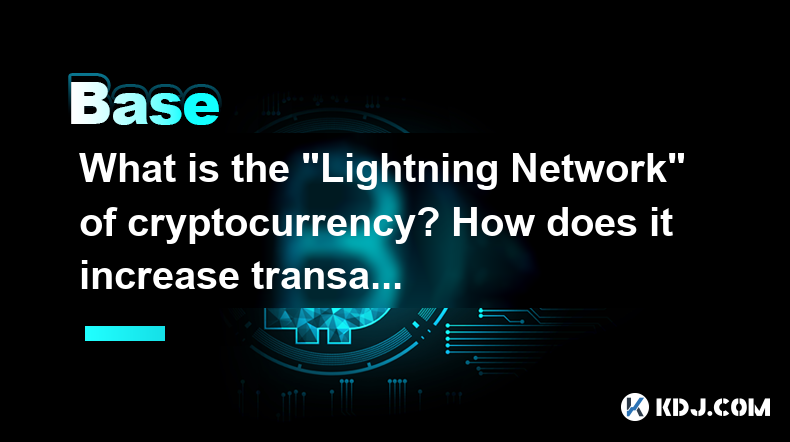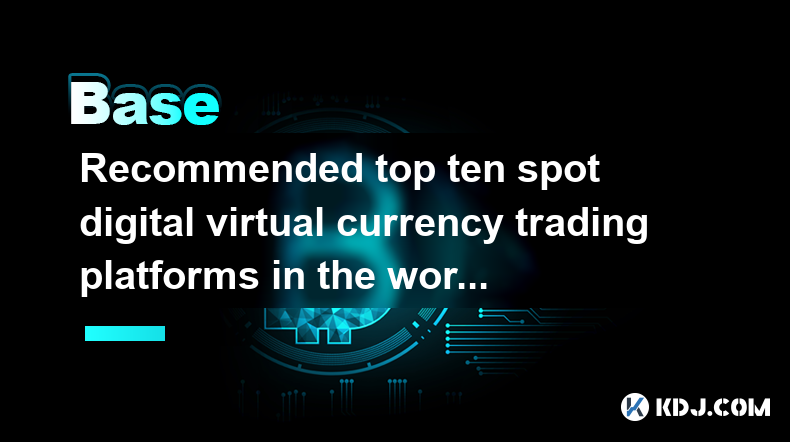-
 Bitcoin
Bitcoin $87,637.3009
3.62% -
 Ethereum
Ethereum $1,619.6345
2.40% -
 Tether USDt
Tether USDt $0.9997
-0.02% -
 XRP
XRP $2.1149
2.87% -
 BNB
BNB $602.1762
2.09% -
 Solana
Solana $137.8253
0.20% -
 USDC
USDC $0.9996
-0.04% -
 Dogecoin
Dogecoin $0.1607
4.00% -
 TRON
TRON $0.2420
-1.26% -
 Cardano
Cardano $0.6419
4.18% -
 Chainlink
Chainlink $13.4026
2.77% -
 Avalanche
Avalanche $20.3782
4.92% -
 UNUS SED LEO
UNUS SED LEO $9.0084
-3.44% -
 Stellar
Stellar $0.2566
6.15% -
 Toncoin
Toncoin $3.0111
1.38% -
 Shiba Inu
Shiba Inu $0.0...01251
1.78% -
 Sui
Sui $2.2326
5.85% -
 Hedera
Hedera $0.1696
4.46% -
 Bitcoin Cash
Bitcoin Cash $337.7284
0.90% -
 Polkadot
Polkadot $3.8972
1.25% -
 Litecoin
Litecoin $79.9963
5.10% -
 Hyperliquid
Hyperliquid $18.0042
2.62% -
 Dai
Dai $0.9999
0.00% -
 Bitget Token
Bitget Token $4.4458
2.27% -
 Ethena USDe
Ethena USDe $0.9992
-0.01% -
 Pi
Pi $0.6361
1.22% -
 Monero
Monero $215.1319
-0.70% -
 Uniswap
Uniswap $5.4058
3.91% -
 Pepe
Pepe $0.0...07908
6.59% -
 Aptos
Aptos $5.1454
2.71%
What is the "Lightning Network" of cryptocurrency? How does it increase transaction speed?
The Lightning Network enhances Bitcoin's scalability by enabling off-chain transactions through payment channels, reducing fees and increasing speed.
Mar 29, 2025 at 08:14 am

Understanding the Lightning Network
The Lightning Network is a layer-2 scaling solution for Bitcoin and other cryptocurrencies. It operates on top of the main blockchain, addressing the limitations of slow transaction speeds and high fees associated with on-chain transactions. Instead of broadcasting every transaction to the entire network, the Lightning Network uses a network of payment channels between users. This significantly reduces the load on the main blockchain.
How the Lightning Network Works: Establishing a Channel
Before transactions can occur, users must first establish a payment channel. This involves a two-party agreement, locking funds in a multi-signature escrow. Both parties contribute Bitcoin to this escrow, which is held securely until the channel is closed. This initial setup requires an on-chain transaction, but subsequent transactions within the channel are off-chain.
- Step 1: Channel Opening: Both parties agree to open a channel and lock funds in a multi-signature transaction on the Bitcoin blockchain.
- Step 2: Transaction Broadcasting: The transaction is broadcast to the Bitcoin network, securing the funds within the established channel.
- Step 3: Off-Chain Transactions: Once the channel is open, transactions can occur quickly and cheaply between the two parties. These transactions are not recorded on the blockchain immediately.
How the Lightning Network Increases Transaction Speed
The speed improvement comes from the off-chain nature of transactions. Instead of each transaction being individually verified and added to the blockchain, transactions within a Lightning Network channel are settled later. This significantly reduces the confirmation time and associated fees. Think of it like using cash instead of writing a check for every small purchase. The check (blockchain transaction) is only used for larger or final settlements.
Managing Funds and Closing a Channel
The funds remain locked in the channel until it's closed. Closing a channel requires an on-chain transaction, updating the balance based on the transactions that occurred off-chain. This process is similar to reconciling a bank account at the end of the month. It's important to note that while transactions within the channel are fast, closing the channel does involve an on-chain transaction.
- Step 1: Transaction Updates: Each transaction within the channel is recorded as a digital signature, updating the balance between the two parties.
- Step 2: Channel Closing: When the parties decide to close the channel, they broadcast a closing transaction to the blockchain, reflecting the final balance.
- Step 3: Funds Released: The funds are released to each party according to their final balance in the closed channel.
Routing Payments Through the Network
The Lightning Network isn't just about direct peer-to-peer transactions. It's a network of channels, allowing payments to be routed through multiple intermediaries. This is crucial for enabling payments between users who don't have a direct channel established. The routing process is automated, finding the most efficient path through the network.
- Step 1: Payment Initiation: The payer initiates a payment to the payee, specifying the amount.
- Step 2: Route Selection: The Lightning Network automatically selects the optimal route through the network of channels.
- Step 3: Payment Forwarding: Intermediaries forward the payment along the chosen route, each receiving a small fee.
- Step 4: Payment Completion: The payment reaches the payee, completing the transaction.
Security and Privacy on the Lightning Network
The Lightning Network inherits the security of the underlying blockchain. The multi-signature escrow ensures that funds are securely held, and transactions are cryptographically secured. Furthermore, the off-chain nature of transactions enhances privacy, as transaction details are not publicly visible on the blockchain. However, the opening and closing of channels are still recorded on the blockchain.
Scalability and Capacity of the Lightning Network
The Lightning Network's scalability comes from its ability to handle a large number of off-chain transactions without overwhelming the main blockchain. However, the capacity of the network depends on the number of established channels and the amount of funds locked within them. As the network grows, its capacity increases, allowing for more transactions.
Frequently Asked Questions
Q: Is the Lightning Network only for Bitcoin?
A: While initially developed for Bitcoin, the Lightning Network concept is being adapted for other cryptocurrencies. Several altcoins are exploring similar layer-2 scaling solutions.
Q: Are Lightning Network transactions completely anonymous?
A: No, while transactions within the channel are not publicly visible on the blockchain, the opening and closing of channels are. This reveals some information about the participants and transaction amounts.
Q: How secure is the Lightning Network?
A: The security of the Lightning Network is largely dependent on the security of the underlying blockchain and the implementation of the software used. It benefits from the cryptographic security of Bitcoin.
Q: What are the limitations of the Lightning Network?
A: The need for an initial on-chain transaction to open and close channels, potential channel management complexities, and the dependence on the underlying blockchain's security are some limitations.
Q: How does the Lightning Network compare to other scaling solutions?
A: The Lightning Network is a layer-2 solution, distinct from layer-1 scaling solutions like increasing block size. Its off-chain approach offers a different set of trade-offs regarding speed, scalability, and security.
Disclaimer:info@kdj.com
The information provided is not trading advice. kdj.com does not assume any responsibility for any investments made based on the information provided in this article. Cryptocurrencies are highly volatile and it is highly recommended that you invest with caution after thorough research!
If you believe that the content used on this website infringes your copyright, please contact us immediately (info@kdj.com) and we will delete it promptly.
- Atok Partners with Bitgert to Advance Infrastructure and Advertising Economy in Web3 World
- 2025-04-21 23:00:13
- Pi Network (PI) Coin Could Be the Next Cryptocurrency to Launch an Exchange Traded Fund (ETF)
- 2025-04-21 23:00:13
- Strategy, the world's largest corporate Bitcoin holder, has purchased 6,556 BTC for $555.8 million
- 2025-04-21 22:55:13
- Bitcoin (BTC) Price Prediction: Arthur Hayes Hints at a Final Opportunity to Buy BTC Under $100K
- 2025-04-21 22:55:13
- Binance Adds ZORA to Spotlight Projects on Binance Alpha Alongside Other Names
- 2025-04-21 22:50:12
- Bitcoin (BTC) Price Prediction: BTC Surges Nearly 5%
- 2025-04-21 22:50:12
Related knowledge

Recommended top ten spot digital virtual currency trading platforms in the world in 2025
Apr 21,2025 at 05:15pm
Recommended top ten spot digital virtual currency trading platforms in the world in 2025 1. Binance As the world's premier cryptocurrency trading platform, Binance is known for its extensive trading pairs and efficient trading services. Its features include: High Liquidity : Binance has huge trading volumes, ensuring users can trade at the best pric...

Ranking of top ten virtual currency trading apps in the currency circle (the latest authoritative list in 2025)
Apr 21,2025 at 10:28pm
The top ten virtual currency trading apps in the 2025 cryptocurrency circle are listed as follows: 1. Binance Binance is one of the world's leading cryptocurrency trading platforms, known for its efficient trading system and extensive currency support. Binance's user interface is designed with simplicity and is suitable for beginners and profess...

What are the digital currency APP trading software in 2025? Ranking of the top ten digital virtual currency trading apps
Apr 21,2025 at 08:42pm
Ranking of the top ten digital virtual currency trading apps in 2025 1. Binance Binance continues to maintain its position as the world's leading digital currency trading platform in 2025. Its advantages include: Efficient trading volume : Binance has top trading volumes around the world, ensuring users can trade efficiently at any time. Diverse tra...

Ranking of the top ten cryptocurrency trading apps in the currency circle in 2025
Apr 21,2025 at 08:49pm
Ranking of the three major virtual currency trading applications in the currency circle Binance: The world's leading cryptocurrency trading platform Binance has always been one of the pioneers in the cryptocurrency trading world. With its huge trading volume and a wide user base, it has become one of the most popular trading platforms in the world. ...

Top 10 best virtual currency trading platforms in the world ranked latest rankings for 2025
Apr 21,2025 at 10:00pm
Top 10 Most Popular Virtual Currency Trading Platforms in the World 1.Binance Binance is one of the world's leading cryptocurrency trading platforms, and is popular for its high liquidity and rich trading pairs. Binance supports over 500 cryptocurrencies and provides fiat currency deposit and cash withdrawal services. The platform interface is user-...

A list of the top ten digital currency trading apps in the world (2025 professional authoritative list)
Apr 21,2025 at 04:00pm
A list of the top ten digital currency trading applications in the world 1. Binance As the world's largest digital currency trading platform, Binance ranks first with its huge trading volume and rich trading pairs. Binance not only supports a variety of digital currency trading, but also provides a variety of services such as leveraged trading, futu...

Recommended top ten spot digital virtual currency trading platforms in the world in 2025
Apr 21,2025 at 05:15pm
Recommended top ten spot digital virtual currency trading platforms in the world in 2025 1. Binance As the world's premier cryptocurrency trading platform, Binance is known for its extensive trading pairs and efficient trading services. Its features include: High Liquidity : Binance has huge trading volumes, ensuring users can trade at the best pric...

Ranking of top ten virtual currency trading apps in the currency circle (the latest authoritative list in 2025)
Apr 21,2025 at 10:28pm
The top ten virtual currency trading apps in the 2025 cryptocurrency circle are listed as follows: 1. Binance Binance is one of the world's leading cryptocurrency trading platforms, known for its efficient trading system and extensive currency support. Binance's user interface is designed with simplicity and is suitable for beginners and profess...

What are the digital currency APP trading software in 2025? Ranking of the top ten digital virtual currency trading apps
Apr 21,2025 at 08:42pm
Ranking of the top ten digital virtual currency trading apps in 2025 1. Binance Binance continues to maintain its position as the world's leading digital currency trading platform in 2025. Its advantages include: Efficient trading volume : Binance has top trading volumes around the world, ensuring users can trade efficiently at any time. Diverse tra...

Ranking of the top ten cryptocurrency trading apps in the currency circle in 2025
Apr 21,2025 at 08:49pm
Ranking of the three major virtual currency trading applications in the currency circle Binance: The world's leading cryptocurrency trading platform Binance has always been one of the pioneers in the cryptocurrency trading world. With its huge trading volume and a wide user base, it has become one of the most popular trading platforms in the world. ...

Top 10 best virtual currency trading platforms in the world ranked latest rankings for 2025
Apr 21,2025 at 10:00pm
Top 10 Most Popular Virtual Currency Trading Platforms in the World 1.Binance Binance is one of the world's leading cryptocurrency trading platforms, and is popular for its high liquidity and rich trading pairs. Binance supports over 500 cryptocurrencies and provides fiat currency deposit and cash withdrawal services. The platform interface is user-...

A list of the top ten digital currency trading apps in the world (2025 professional authoritative list)
Apr 21,2025 at 04:00pm
A list of the top ten digital currency trading applications in the world 1. Binance As the world's largest digital currency trading platform, Binance ranks first with its huge trading volume and rich trading pairs. Binance not only supports a variety of digital currency trading, but also provides a variety of services such as leveraged trading, futu...
See all articles






















































































